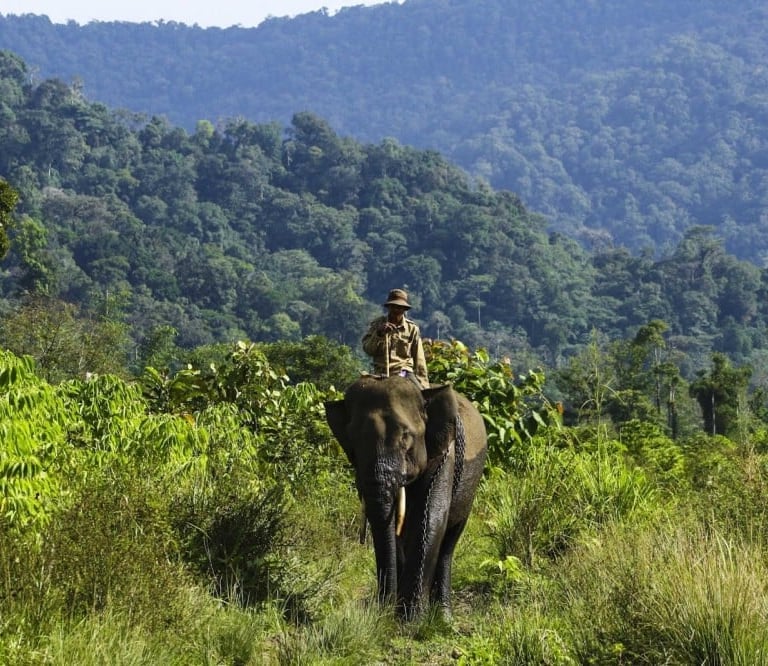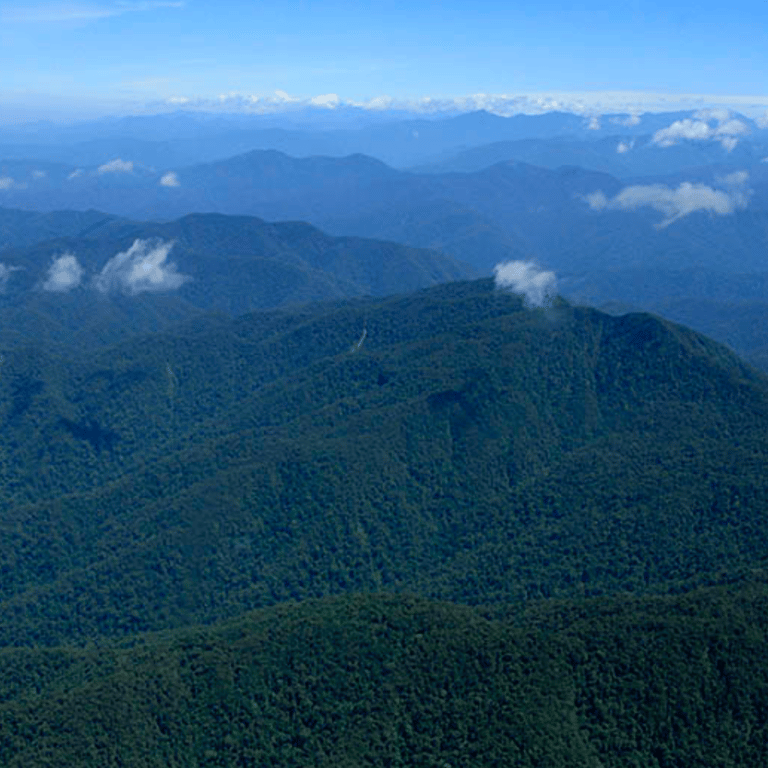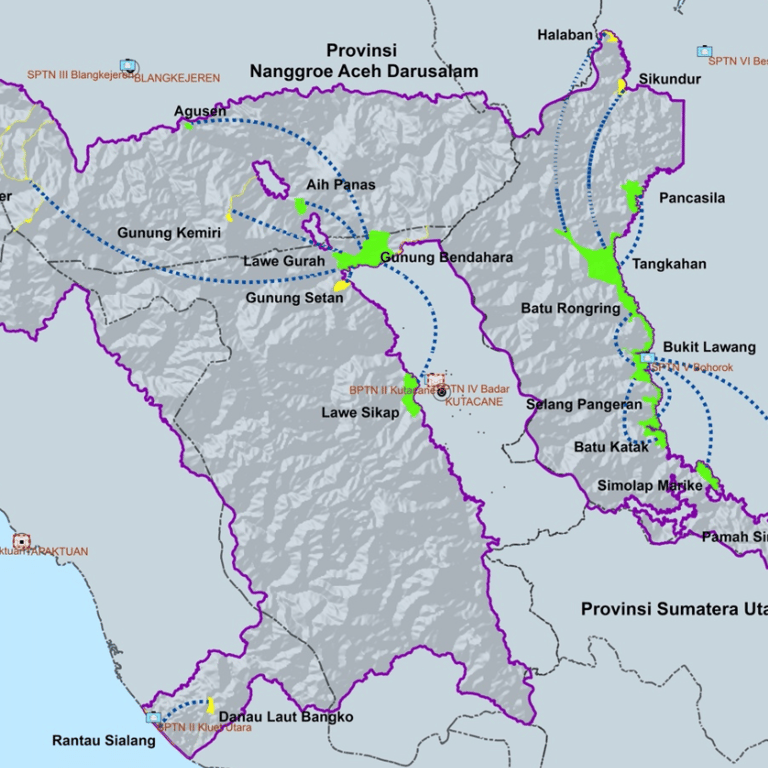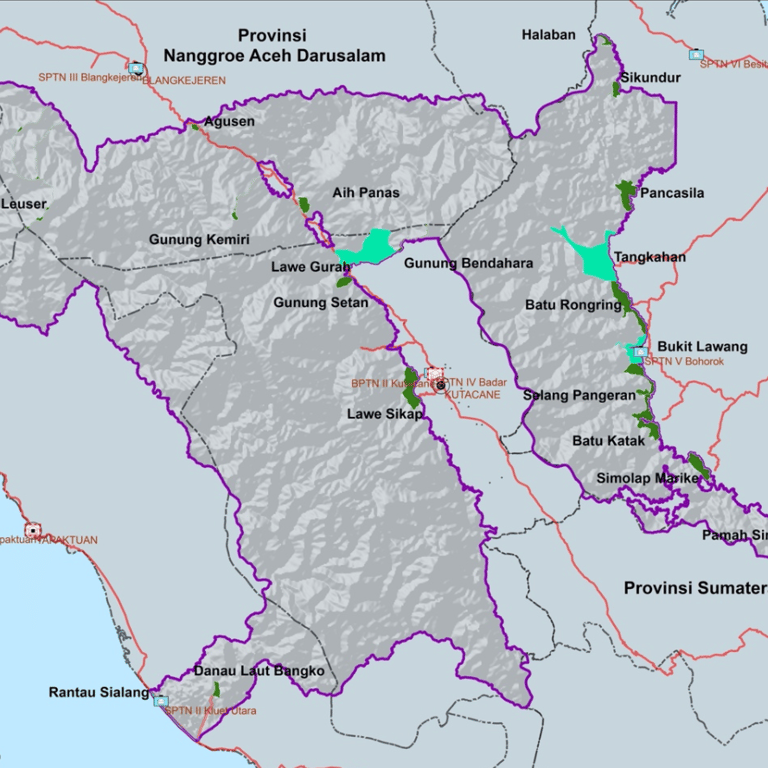Ecotourism Masterplan of Gunung Leuser National Park: Leuser, the Last Resort of Sumatran Big Mammals
Gunung Leuser National Park in northern Sumatra is the last viable refuge for four critically endangered species: the Sumatran orangutan, elephant, tiger, and rhinoceros. This UNESCO-listed park integrates wildlife protection with sustainable tourism and community empowerment. Through programs like CARE and SAVE, ecotourism zones are developed to balance conservation, education, and economic opportunity. Local communities are actively involved as guides, hosts, and stewards of the forest. With careful zoning, interpretation, and low-impact infrastructure, Leuser offers a model of ethical, resilient tourism—positioning itself not only as the last resort for Sumatran megafauna, but also a first step toward sustainable coexistence.
Abyakta Landscape
1/5/20225 min read
In the deep, mist-covered forests of northern Sumatra lies a sanctuary of irreplaceable ecological importance: Gunung Leuser National Park. This vast expanse of tropical rainforest—covering over 1 million hectares across the provinces of Aceh and North Sumatra—is not just another green space on the global conservation map. It is the last remaining refuge for four of Sumatra’s most iconic, and critically endangered, mammals: the Sumatran orangutan, Sumatran elephant, Sumatran tiger, and Sumatran rhinoceros. The phrase “last resort” is not used lightly. The populations of these large mammals have plummeted due to deforestation, illegal wildlife trade, habitat fragmentation, and increasing human-wildlife conflict. Across Southeast Asia, very few places remain where such species coexist in a contiguous, functional ecosystem. Gunung Leuser is the last of those places. Its survival—along with the species that depend on it—depends not only on legal protection, but also on an ambitious strategy to integrate conservation, sustainable tourism, and community-based stewardship. Gunung Leuser’s remarkable biodiversity includes over 129 species of mammals, 380 bird species (with 350 being resident species), and countless reptiles, amphibians, and invertebrates. It is estimated that 65% of all mammal species found on the island of Sumatra are present within this park. Many of these animals are found in the lower elevation rainforests below 1,000 meters—zones which are now most at risk. Within this biological treasure trove, the park's management has identified four “flagship species” for conservation attention: the Sumatran orangutan (Pongo abelii), the Sumatran elephant (Elephas maximus sumatranus), the Sumatran tiger (Panthera tigris sumatrae), and the Sumatran rhino (Dicerorhinus sumatrensis). These species are not only key to the ecological integrity of the Leuser ecosystem, but also central to its emerging role as a world-class destination for eco-tourism and environmental education.
The orangutan, perhaps the most well-known symbol of Sumatra’s wildlife, finds one of its last secure habitats in the lush forests of Bukit Lawang and Batu Katak. Here, semi-wild populations can be observed by visitors on regulated jungle treks guided by local experts. These experiences, when carefully managed, offer a rare opportunity to encounter great apes in their natural environment, while also raising awareness about the threats they face. Sumatran elephants, meanwhile, roam the lowland forests of Tangkahan, Kappi, and Sei Lepan. These elephants prefer areas with rich food sources such as bamboo, wild grasses, lianas, and fruiting trees like durian and mango. However, shrinking habitats and food shortages have increasingly led to human-elephant conflict. Community-based elephant patrols and habitat restoration efforts, combined with tourism income, are now helping mitigate these pressures. The elusive Sumatran tiger ranges through both coastal and upland zones up to 2,000 meters. Though rarely seen, their presence is confirmed through camera trap surveys and patrols across districts like Aceh Tenggara and Langkat. Interpretive centers and conservation storytelling help visitors understand the tiger’s role in the ecosystem, even if they never lay eyes on the animal itself. The rarest of them all, the Sumatran rhinoceros, survives only in the most remote pockets of Gunung Leuser—far from any tourist trails. These solitary, forest-dwelling creatures depend on dense undergrowth, salt licks, and absolute seclusion. While direct tourism is impossible, their plight is integral to the park’s identity, inspiring global support for its conservation programs.
To preserve these species and their habitats, Gunung Leuser is developing a sustainable tourism model grounded in the concepts of eco-tourism, interpretation, and community empowerment. Under the banner theme "Leuser: The Last Resort of Sumatran Big Mammals", this model blends nature-based travel with education, volunteering, and scientific exploration. Two primary programs anchor this vision: CARE and SAVE. The CARE Program (Community, Accessibility, Recreation, and Environment) operates in the park’s Ruang Pariwisata Alam Intensif (RPAI)—zones designated for general tourism. Here, visitors can enjoy recreational activities like trekking, wildlife watching, waterfall exploration, and local cultural experiences. Facilities are designed with eco-design ethics: low-impact materials, renewable energy use, and waste minimization. Meanwhile, the SAVE Program (Science, Adventure, Volunteering, and Education) operates in Ruang Pariwisata Alam Terbatas (RPAT)—zones dedicated to environmental education, research, and community involvement. These areas are ideal for student groups, conservation professionals, and volunteers. Activities include birdwatching, reforestation, environmental monitoring, and cultural immersion. In this way, tourism becomes a platform for conservation learning rather than mere consumption.
Gunung Leuser’s zoning system supports this dual approach. Areas like Bukit Lawang and Tangkahan serve as core ecotourism sites. Meanwhile, emerging zones like Lawe Gurah, Gunung Setan, and Batu Katak offer additional thematic experiences—hot springs, karst caves, jungle camping, and even Rafflesia flower tours. All zones are chosen based on ecological sensitivity, accessibility, and community readiness.
Community empowerment is the linchpin of the strategy. Villagers are trained as guides, homestay operators, craft artisans, and conservation educators. Programs aim to ensure that economic returns from tourism flow back to the community fairly and transparently. Tourism is not an external intervention—it is an extension of the community's relationship with the forest. In many places, former poachers and loggers now work as rangers and wildlife ambassadors. This strategy is also responsive to shifting tourism trends. The park targets the "hardcore ecotourist" market—visitors who prefer remote, authentic experiences with high conservation value. These tourists typically travel in small groups, manage their own itineraries, and seek immersive encounters rather than mass-market entertainment. Leuser’s remoteness, intact ecosystems, and minimal development position it perfectly for this segment.
The infrastructure vision reflects these values. Nature trails, river crossings, and interpretive signage are carefully placed to avoid disturbing habitats. Interpretation centers provide pre-trip orientation and environmental briefings. In zones like Batu Katak and Lawe Gurah, tourism activities like tubing, birdwatching, and cave exploration are regulated with local codes of conduct and environmental safeguards.Interpretation is central to visitor experience. Gunung Leuser is envisioned not just as a destination, but as a living classroom. Each trail, lodge, and ranger post becomes a venue for storytelling—about the orangutan's tool use, the tiger’s solitary habits, the rhino’s ancient lineage, and the elephant’s intelligence and memory. By weaving science, culture, and conservation messages into the journey, the park seeks to transform passive tourists into active conservation allies. Of course, challenges remain. Climate change, biodiversity collapse, and the growing popularity of nature-based tourism bring new pressures. The COVID-19 pandemic revealed the vulnerabilities of tourism-dependent economies. Therefore, the park's strategy emphasizes resilience, diversification, and ethics in every layer of development. Tourism is not an end, but a means to strengthen conservation outcomes and community well-being.
Operational strategies are in place to minimize negative impacts. Guidelines for visitor behavior, carrying capacity, waste management, and local business partnerships are enforced. Environmental monitoring is integrated into tourism operations, including the use of camera traps, drone surveys, and GIS-based mapping of sensitive habitats. The long-term vision aligns with national and global conservation goals. Gunung Leuser contributes directly to Indonesia’s biodiversity protection commitments, supports its eco-tourism development agenda, and advances the Sustainable Development Goals (SDGs)—especially those related to climate action, life on land, and community resilience. In the end, what makes Gunung Leuser unique is not just its wildlife or landscapes—but its people, stories, and courage. This forest is not frozen in time. It is evolving, learning, and adapting. Its future will not be decided only by conservationists or tourists, but by a collective of farmers, rangers, scientists, policymakers, and students—who believe that saving the last resort of Sumatran big mammals is also about saving a deeper truth: that humans and nature do not need to be at odds. Gunung Leuser is a last resort, yes—but it can also be a first step.




ABYAKTA
PT Abyakta Bhumi Arya, established in 2019, is a landscape company based in Bogor, Indonesia. We are composed of licensed and experienced landscape team who are dedicated to both landscape design and construction. This dedication makes us a reliable partner for your landscape project. We collaborate closely with clients to understand their needs, preferences, and the unique characteristics of each site. This approach allows us to develop custom landscape designs that meet your specific goals.
CONTACT US
© 2019-2025 Abyakta Landscape. All Rights Reserved.
